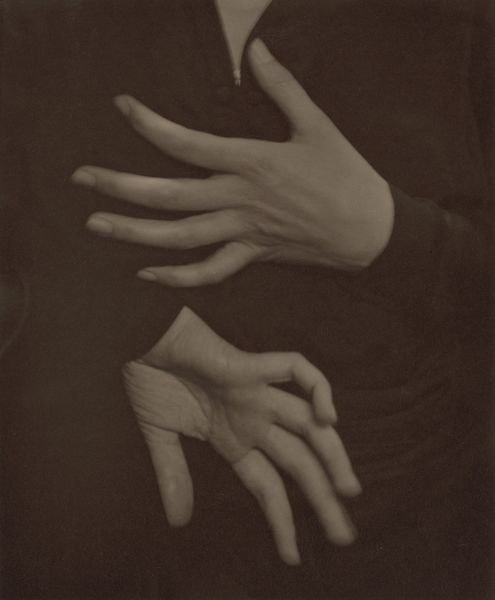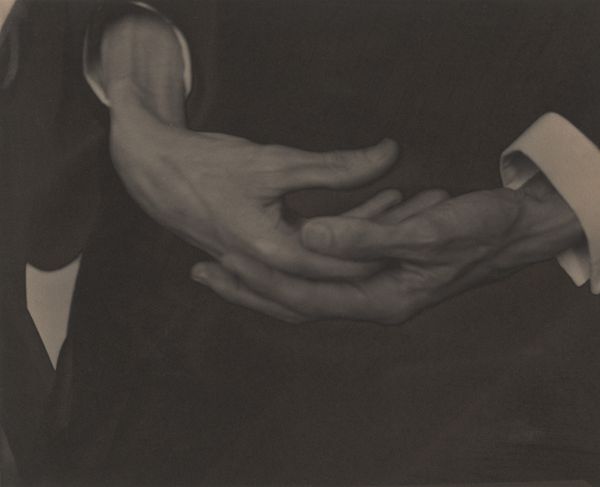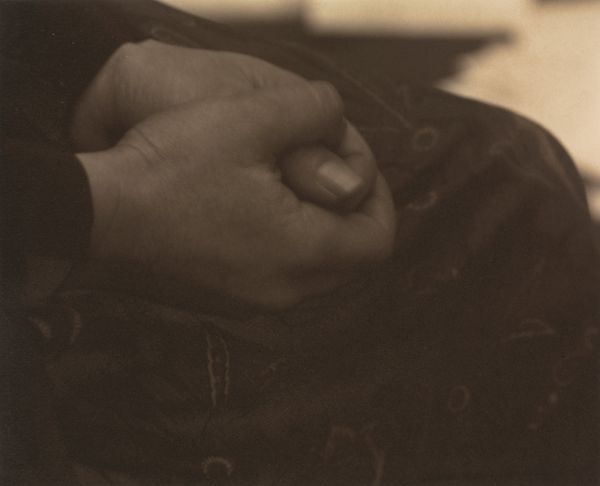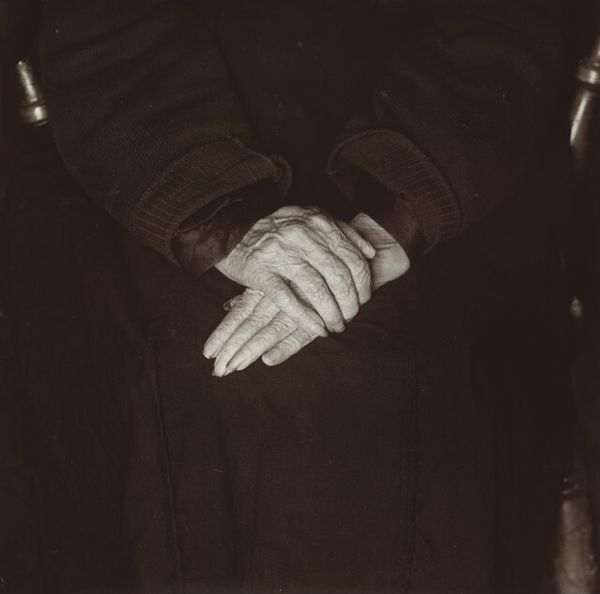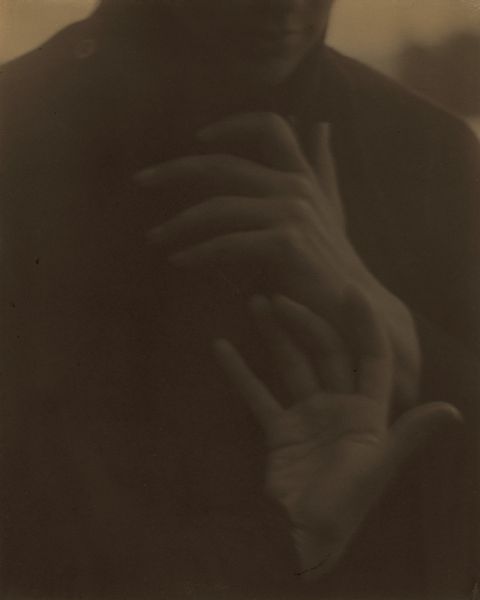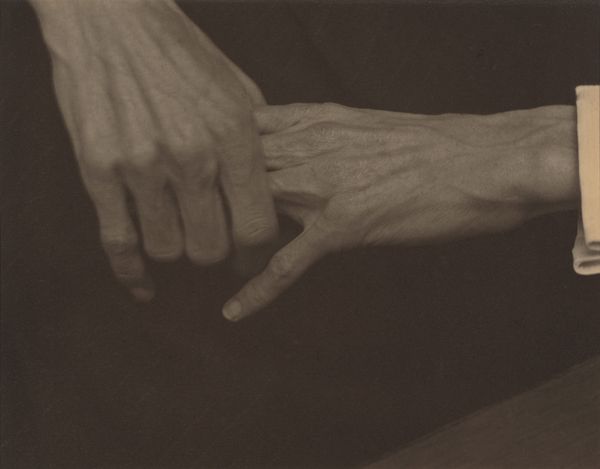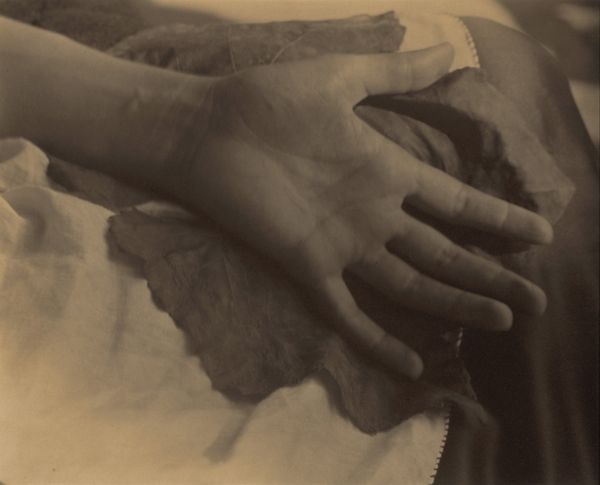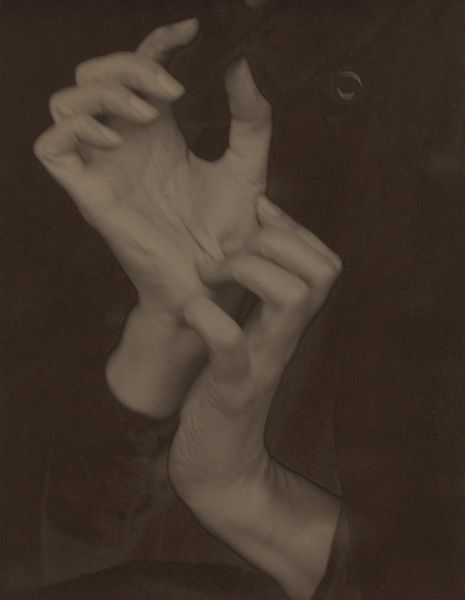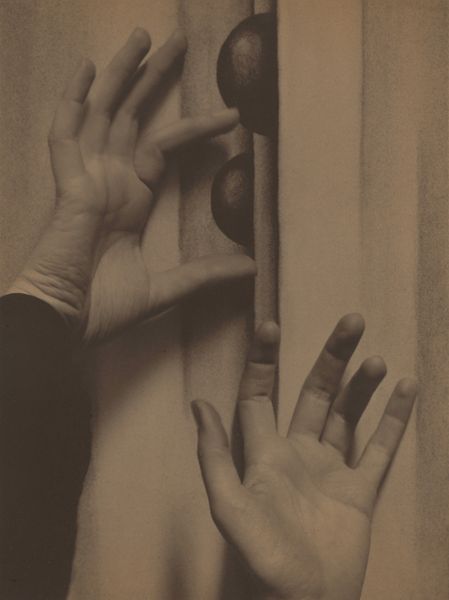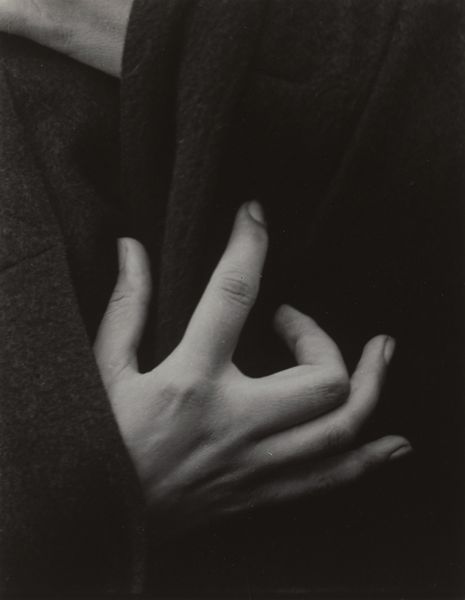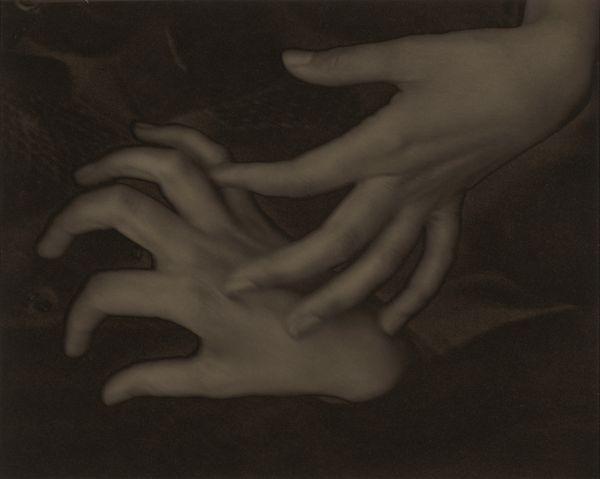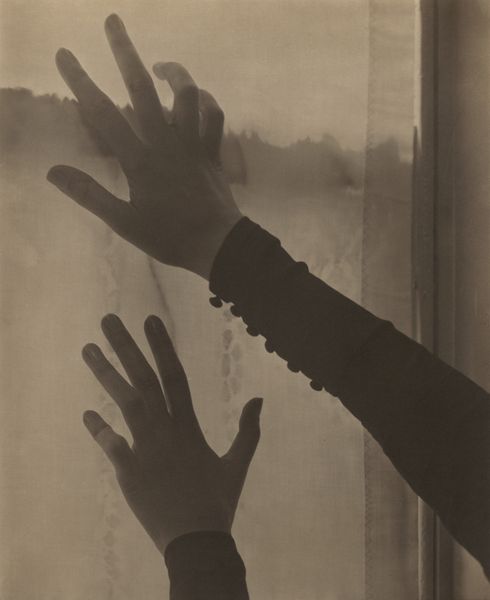
photography
#
portrait
#
pictorialism
#
photography
#
historical photography
#
geometric
Dimensions: image: 18.9 × 23.3 cm (7 7/16 × 9 3/16 in.) sheet: 20.4 × 25.3 cm (8 1/16 × 9 15/16 in.) mount: 56.6 × 47 cm (22 5/16 × 18 1/2 in.)
Copyright: National Gallery of Art: CC0 1.0
Curator: This photograph by Alfred Stieglitz, taken in 1921, is titled "Helen Freeman". It is a striking example of Pictorialism. Editor: It feels like a secret gesture. The interlaced fingers and pointed index fingers create a sense of tension and directed energy, as if conveying a clandestine message. The restricted monochrome palette adds to its enigmatic quality. Curator: Stieglitz’s Pictorialist approach involved manipulating the photographic process to achieve painterly effects. Consider the historical context: post-World War I, women were pushing boundaries, challenging societal norms and constraints. To me, the angularity in her hand positioning reads as defiance. What do you see? Editor: Definitely. The fingers pointing outwards resemble arrows, perhaps symbolizing direction, ambition, or even a call to action. Hands themselves have been used in art as symbols of creation, power, and connection for millennia. Note the placement of the wedding ring, almost obscured, while the subjects directs outwards, pushing into new horizons. Curator: Precisely! Pictorialism in this era was deeply intertwined with ideas of artistic autonomy, where women were starting to assert their roles in shaping artistic movements. In what ways does this challenge preconceived notions of female identity in the 1920s? Editor: It's not simply passive portraiture; the image seems designed to provoke and communicate meaning through codified gestures. There's almost a confrontational element—like Freeman is actively making a statement, rather than merely posing. It’s Stieglitz using symbolic language to give his subject presence, which is something to contemplate when exploring the gender and social dynamics present here. Curator: These points are very important, especially when evaluating it in conjunction with cultural changes that affected women artists in that period, and Stieglitz’s particular agenda. Editor: The symbols provide the cues to a reading that is more deliberate and layered than first perceived, which speaks to both Stieglitz’s approach and Freeman’s active participation in constructing a visual statement.
Comments
No comments
Be the first to comment and join the conversation on the ultimate creative platform.
